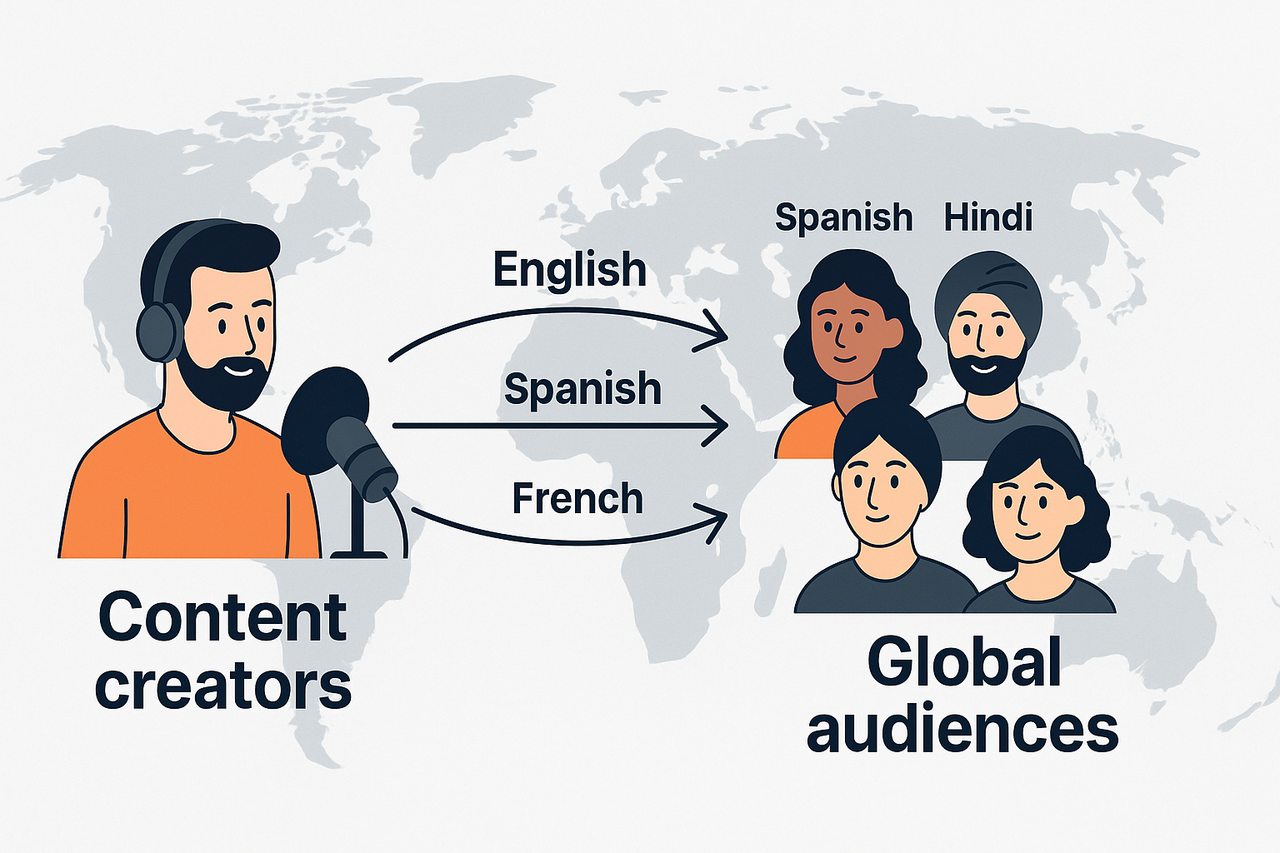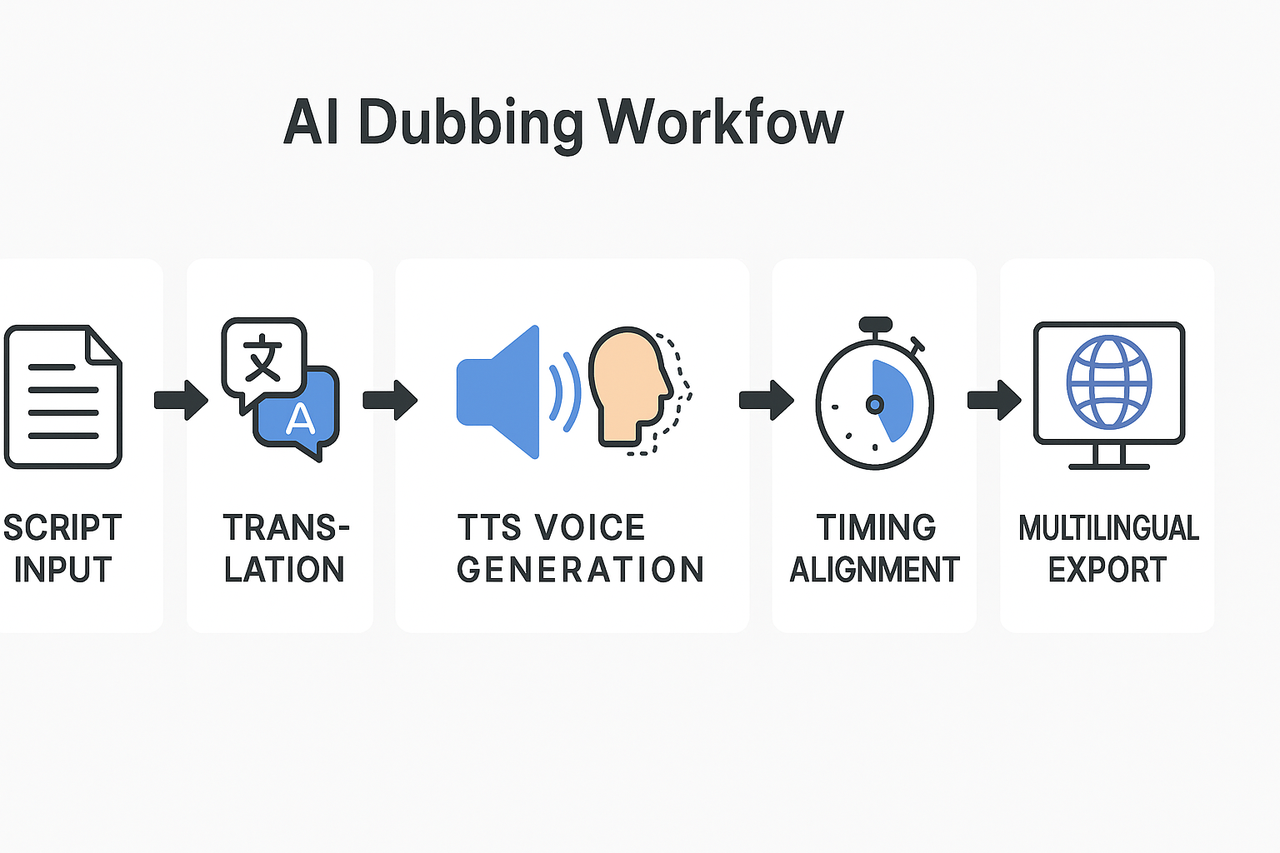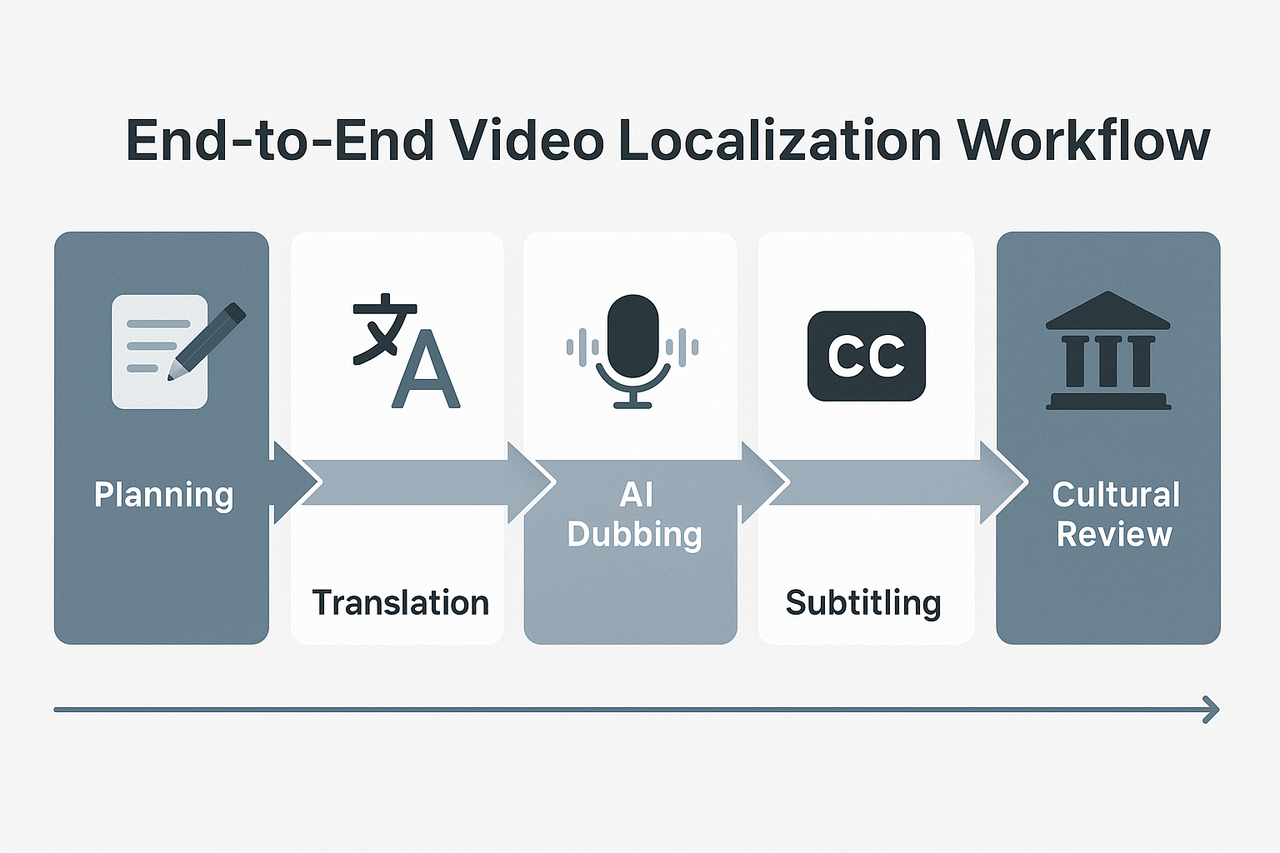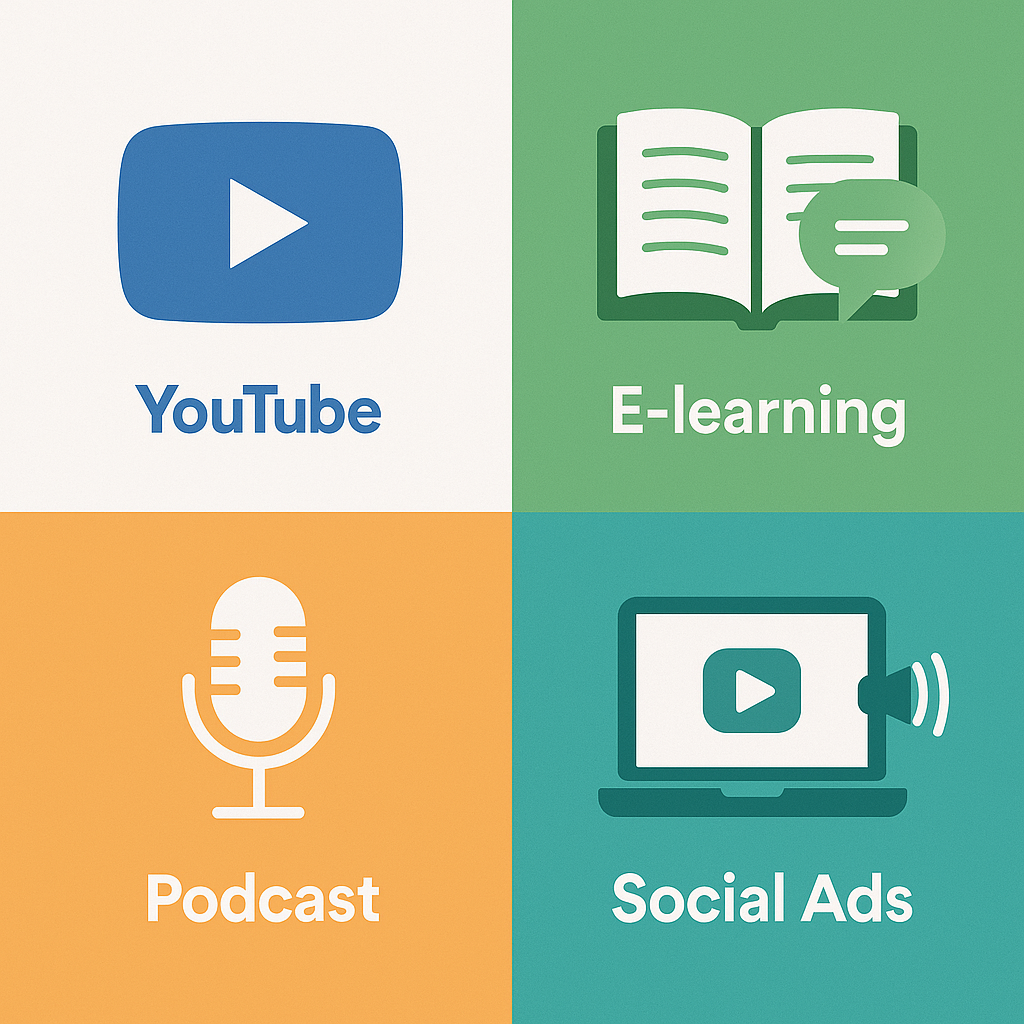What Is Video Dubbing and Why Does It Matter?
Why Creators and Brands Should Care
-
Global Accessibility: Reach audiences who prefer or only understand content in their native language.
-
Improved Engagement: Viewers are more likely to watch dubbed content over subtitles for long-form video.
-
Brand Localization: Show your brand respects and invests in different markets.
Beyond Subtitles: Why Dubbing Wins

How AI Dubbing Works (and Why It’s Better)
Step-by-Step Breakdown of AI Dubbing
-
Script Analysis: Extract or transcribe the original video transcript.
-
Machine Translation: Translate the script using AI-powered translation tools.
-
Text-to-Speech (TTS): Generate natural-sounding voiceovers in the target language.
-
Voice Cloning (Optional): Clone the original speaker’s voice for brand consistency.
-
Timing & Sync: Align the AI speech to video timing or lip movements.
-
Multilingual Export: Export the localized version with native-fluent audio.

Why AI Dubbing Is a Game-Changer
-
Speed: Turnaround that used to take hours in traditional studios now completes in clicks.
-
Consistency: AI voices deliver uniform tone, accent, and pronunciation across projects.
-
Cost: Skip expensive voice talent and recording sessions.
-
Customization: Select from hundreds of languages and emotional tones—or clone your own voice.
End-to-End Video Localization Workflow Explained
The 6-Stage Localization Pipeline
-
Content Planning Decide which videos need localization and define your audience's language preferences.
-
Script Extraction & Translation Use transcription tools to extract your original script, then translate it using AI or human QA.
-
AI Voice Generation / Dubbing Choose a voice (or clone your own) and generate realistic multilingual voiceovers.
-
Subtitle Alignment Automatically align subtitles to match the dubbed audio with accurate timing.
-
Cultural Adaptation Adjust references, visuals, or phrases that may not land well in other cultures.
-
Export & Publish Merge audio, captions, and visuals into localized final cuts, ready for global release.

How DupDub Fits In
Traditional vs AI Dubbing: Cost, Time, and Quality Comparison
Quick Comparison Table
| Criteria | Traditional Dubbing | AI Dubbing (e.g., DupDub) |
| Cost | $50–$500 per minute | <$5 per minute |
| Turnaround Time | 3–10 days | Same day or faster |
| Voice Variety | Limited to hired actors | 400+ AI voices across 40+ languages |
| Scalability | Low (manual process) | High (batch processing, API) |
| Lip Sync Support | Studio-grade with effort | AI-assisted, improving rapidly |
| Customization | Depends on actor/director | Voice cloning, tone control |
When to Choose Which
-
Use Traditional Dubbing for theatrical releases or emotionally nuanced films where human expression is critical.
-
Use AI Dubbing for YouTube videos, online courses, marketing content, training, or anywhere speed and scale matter more than subtle performance.
Real Use Cases of AI Dubbing for Creators and Brands

-
YouTube Creators Growing Global Channels
-
Benefit: Save time and reach 3x the audience without re-recording
-
Example: AI-generated voices ensure consistent branding across versions
-
E-Learning & Online Course Publishers
-
Use Case: Udemy-style creators converting English courses into French, Arabic, or Mandarin
-
Impact: Boost course sales in non-English regions with localized delivery
-
Podcasters Going Multilingual
-
Example: A U.S. business podcast dubbed into German and Japanese for B2B growth
-
Tool Tip: Use DupDub's voice cloning to preserve host identity across versions
-
Brands Localizing Video Ads & Social Campaigns
-
Internal Training & Compliance Videos
-
Use Case: Employee onboarding videos available in 12+ languages
-
Advantage: Same-day delivery with reduced HR overhead
Why DupDub Is the Best AI Dubbing Solution
What Makes DupDub Different?
-
Huge Multilingual Voice Library Over 700 realistic AI voices across 90+ languages and accents.
-
Voice Cloning Capabilities Need to preserve your personal brand? Clone your own voice and dub in any language.
-
Subtitle & Lip Sync Integration Built-in alignment tools match timing and sync subtitles automatically.
-
Fast & Scalable Workflow From single videos to bulk content, DupDub handles export, subtitle, and dubbing workflows at speed.
-
Web-Based Simplicity No need to install software or build your own pipeline—just log in, upload, and localize.
Tailored for Real Use Cases
-
Solo creator — use it to dub your videos in 5+ languages
-
Startup — localize your explainer demo in 48 hours
-
Enterprise — create multilingual HR or product content without increasing headcount

Final Thoughts: Is AI Dubbing Right for You?
When to Choose AI Dubbing
-
You need fast turnaround for multilingual videos
-
You don’t have a voiceover team or localization budget
-
You want to test new markets without high risk
-
You care about brand consistency across languages
When You Might Still Need Traditional Dubbing
-
Your project requires intense emotional nuance (e.g., feature films)
-
You need studio-quality lip sync and direction
-
You have the budget and time for full voice production
FAQs
-
What is AI dubbing?
AI dubbing is the use of artificial intelligence to replace spoken dialogue in a video with a different language. It uses text-to-speech, voice cloning, and timing algorithms to automate voice localization without traditional recording sessions.
-
Is AI dubbing better than subtitles?
For many use cases, yes. Dubbing removes the language barrier entirely and creates a more immersive experience. Viewers don’t have to read and watch at the same time, which improves retention and engagement.
-
Can I clone my voice for dubbing?
Yes. DupDub allows you to create a cloned voice model from your own voice, so you can dub your videos in other languages without losing your tone or identity.
-
Does AI dubbing support lip-syncing?
Many platforms, including DupDub, offer AI-powered timing and lip-sync features. While it's not perfect for every use case, it's accurate enough for most online content, training videos, and presentations.
-
How accurate is AI translation for dubbing?
Modern AI translation is surprisingly accurate for general-purpose scripts. However, for highly technical or brand-sensitive content, it's recommended to review or fine-tune the output manually.
-
Where can I try AI dubbing for free?
You can test AI dubbing with voice selection, translation, and video export at: ? https://www.dupdub.com

